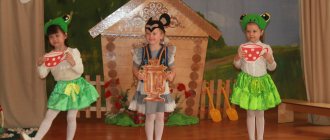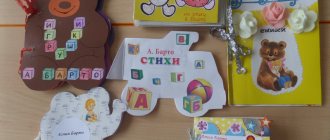Methodology for using expressive means in a theatrical festival
This article examines the problem of using expressive means in a mass theatrical festival. The specificity of mass representation lies in the special, often minimalist use of words. Modern mass performance can often include such types of arts as fragments of performances, songs, dances, etc.
Key words: holiday, mass, script, art, illustration, theatricalization, ideological and emotional impact
A mass holiday has a variety of means of ideological and emotional influence. Thanks to them, an emotional presentation and assessment of what is happening on the festive site is built. However, “not all holiday organizers manage to achieve high emotional and meaningful results of the holidays. Namely, emotions and content constitute, according to theorists, the basis of creative performance.” [1,181].
They primarily determine the screenwriter's palette. This is, first of all, a living word that creates images that can directly embody and convey the actions, feelings, moods and experiences of people. It is the living word that creates an atmosphere of communication between the stage and any audience. In addition, it carries specific material. An oral presentation in a series of festive events can cover a large period of time, introduce those gathered into an atmosphere of struggle, and convey what cannot be expressed through the means of art.
The specifics of mass representation require extremely economical use of words. This specificity is such that it is permissible to resort to a word with particular rigor and exactingness, to try to find a visual equivalent for it, and if you use it, then as diversely as possible. It is also very important that the participants in the action are emotionally prepared to perceive the speech; a kind of exposure to the appearance of the speaker and his speech is necessary. This is the difference between performing in a theatrical performance and other types of performances. The word of an interesting hero, an honored guest, a participant in certain events is often an obligatory component of a mass action.
Another common type of use of the living word in a mass performance is the speech of the presenter, which contains an important idea and connects episodes. The course of a theatrical festival is more spectacular and emotional when the leader makes a figurative decision, who carries a semantic load and becomes a full-fledged actor, a theatrical character. The basis for creating the image of the presenter is taken from the characters of the story, the characters of the collective image: the earth, the book, the teacher, warriors, young people, etc. The poetic word is also an effective tool for the screenwriter.
Thus, speaking about the word as an expressive means of a mass holiday, we consider it both as a documentary, journalistic word, and as an artistic one.
Other expressive means of theatrical mass performance are various types of art, which are used as dramatizations, fragments from plays and films, songs, music, dance and individual artistic performances. These types of art influence with the power of artistic images, allow you to reproduce events in their movement and development, convey the historical and everyday situation, transfer participants from one place of action to another, show social processes in a matter of minutes, and reveal the intensity of the conflict. “The means of art used in a mass celebration emotionally attune its participants, enhance the impact of the events taking place on the stage, convey the feelings of the characters, complement and move forward the action” [2, 52]. they are used as a continuation of thought or action, as a “background” to an oral presentation, as a visual image.
Art, as an expressive means of a theatrical mass performance, can act in it both as an illustration, and as a driving force of the plot, and as an association. When illustrating a thought, they most often use a methodical technique of continuing this thought through the means of art.
There is also another, less common method of using art in mass action - association, i.e. the desire, with the help of already existing, familiar images, to enhance the sound of certain components of the plot, to make the real image of a contemporary brighter, deeper, more understandable.
Thus, in the mass holiday dedicated to Victory Day, the episode “No One is Forgotten.” The appearance on stage of real heroes - search engines who visited the battlefields, with the participation of their relatives who died near Leningrad. Participants walked across the entire stage area with bouquets of carnations in a very large vase. The screens showed photo slides of visiting mass graves, burial places of relatives, reading the Koran and sprinkling graves with earth from the Mausoleum of Khozha Akhmet Yassaui in Turkestan. This episode created the association of personal presence at the long-awaited meeting of the unknown past and the real today. All spectators from the hall became participants in the moment of the meeting of war and peace, the selfless feat of soldiers, whose portraits were shown during the procession and the story of the soldiers - heroes.
These actions can be replaced by other methods of association. The scarlet banner was slowly unfurled on the site with the soldiers' helmets being taken out and kneeling in front of them.
Associativity is an important method of using art as one of the components in dramaturgy and directing a theatrical mass performance.
Let's take a closer look at the use of music. It can be very appropriately used in a theatrical concert, holiday, rally, procession as a more or less independent whole, even specially created for a specific holiday date. But most often we are talking about a kind of musical dramaturgy of the script, which is based on the synthesis of ready-made musical works belonging to different composers. This is a difficult task, it requires the ability to skillfully edit musical excerpts and a certain musical erudition.
It is appropriate to use the choir as a character at the holiday. Expressing the main idea of the holiday of the 68th anniversary of the Victory of the Soviet troops in the Great Patriotic War, the choir performed three songs sequentially throughout the entire action: “Buchenwald Alarm” by V. Muradeli, “We are all for peace” by S. Tulikov. “Beibit kun ushin” by Sh. Kaldayakov .The technique, used like an ancient choir, turned into a participant in mass action, expressing the grief and protest of the people against the war. Music can become the leitmotif of the entire action, a way to enhance the emotional support of what is happening, and emphasize the associative nature of perception.
Like music and song, a director of mass action can make extensive use of feature and documentary films. It is used especially successfully in the prologue, helping to transport the participants to the era of certain historical events, preparing them for a subsequent meeting with the heroes of these events. These are the numerous film prologues dedicated to the history of our native land, the military path of the army, and the working people.
This was the film prologue that opened the solemn festive performance at SKSU, dedicated to the 70th anniversary of the university. Documentary footage is projected onto the full screen, reviving in memory the stages of the formation and development of the university since 1943 - the year the institute opened. At the end of this film prologue we see students running out of the classroom. As if continuing the film montage, student choreographers run from the depths of the stage, starting the festive performance.
Film material allows you to enhance the sound of an episode in the right direction and enlarge it into a mass action. In a theatrical concert dedicated to the anniversary of SKSU named after. M. Auezov’s dance number “Friendship of Peoples” was “accompanied” by film footage about the unity of the people of Kazakhstan, that the small Assembly of students studying at the university is a particle, a symbol of the peacefulness of the people of Kazakhstan. The dance was shown simultaneously on three screens and seemed to expand the boundaries of dance, turning it into a kind of symbol of unity.
A widespread technique is to use fragments from feature films in constructing a festive event, when the characters seem to come to life and leave the screen. This writing and directing technique is especially popular in corporate performances, where it is possible to show the holiday hero in close-up.
Reveal the biography of the hero, revive the pages of his youth. The possibilities of using cinema or video as an expressive means in a theatrical mass performance are extremely diverse.
Modern holidays are hard to imagine without dancing. At one of the holidays in Shymkent, dedicated to the Day of Victory over Fascism, the dance, symbolizing a fierce battle with enemies, organically smoothly turned into a “broken circle”, built from frozen monuments of mothers and children hugging, different nationalities with candles in their hands. This mise-en-scène decision was read as an image of the Motherland mourning its lost sons. This figurative mise-en-scène of “Grieving Mothers” not only became part of the plot, but also gave the action an associative character. The circle in the Kazakh worldview is the continuity, unity, and inviolability of the connections included in this circle. The war destroyed this connection.
In a mass celebration, the role of visual means, a visual solution, which acts as one of the most important components of theatrical action, is very important. Imaginative design, thoughtfulness of individual symbolic details that carry a special semantic and emotional load - everything is important in the ability to emphasize the main idea. Thus, to celebrate the anniversary of the region, the artist (Honored Worker of Culture of the Republic of Kazakhstan Zhumakulov K.) conceived an interesting image of the stage area in the form of the attire of an old man, whose head rose above the cloth-clothing at the grate. From his shoulders to the red line, the entire area was covered with his cape robe. On the surface of which the performers appeared and hid, i.e., actions took place about seventy years of the region, in facts, performances of heroes, artists, etc. The Earth remained a witness to everything that was happening and led a commentary along with “its children” - the presenters.
Thus, it is clear that a specific scene of action can suggest to the production designer an interesting decorative and artistic image of the holiday.
The work of a director and screenwriter in the genre of a mass festive spectacle requires the ability to use the effects of light and sound, the importance of which is especially significant now, when the latest technical means - light sources, projection and sound recording equipment limitlessly expand the possibilities of light and sound effects.
Sound recordings also allow the director and screenwriter to recall any historical event, “transport” the participants in the action either to Independence Square or to the site of the cosmodrome, and listen to speeches by prominent figures of the country.
In addition to the scripted expressive means of a theatrical holiday, there are also specific independent possibilities for enhancing the emotional impact of the holidays. These are the expressive means of theater art. They are built on the creation of symbolic and allegorical actions used in stage actions - mise-en-scène; material objects that carry a spiritual-sign effect of external and meaningful influence. [3,461] They are reflected in attributes, clothing, props, and stage design. The following article should be devoted to the types, contents and technologies of their use.
Literature:
- Bordovskaya N.V., Rean A.A. Pedagogy - S.P.b., 2001.
- Sharoev I.G. Directing variety shows and mass performances. - Moscow: Education, 2000. - 2nd ed. — 461 S.
- Konovich A. A. Theatrical holidays. M. Higher school, 1999. - 206C.



